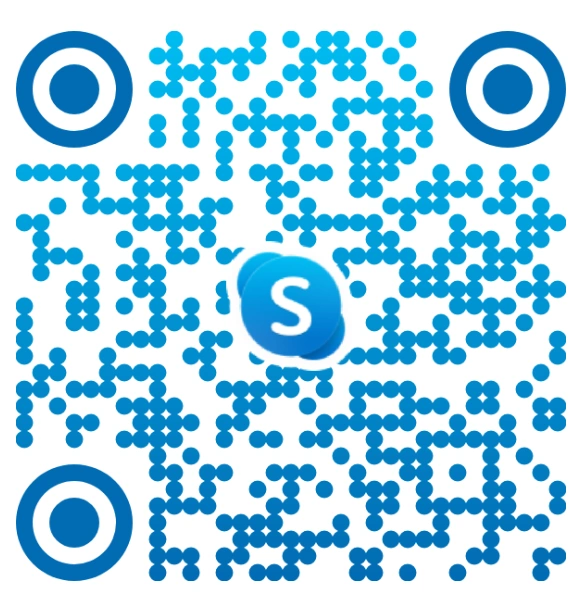Active Retrieval-Augmented Generation: Real-Time Solutions for Smarter Business AI
As artificial intelligence (AI) continues to reshape how modern businesses operate, new breakthroughs like Retrieval-Augmented Generation (RAG) are elevating AI capabilities to the next level. Unlike traditional models that rely solely on pre-trained data, RAG enhances the performance of language models (LLMs) by integrating them with real-time data retrieval systems. This combination results in smarter AI for business, capable of delivering highly accurate, up-to-date, and context-aware responses.
With the growing demand for faster insights, adaptive automation, and data-driven decisions, RAG model AI has emerged as a strategic advantage. More advanced than static models, Active Retrieval-Augmented Generation brings dynamic information into the heart of enterprise operations. It empowers organizations with real-time AI solutions for business that are scalable, responsive, and built for constant change.
This blog explores how Active RAG is transforming business intelligence, optimizing workflows, and unlocking smarter, more personalized customer experiences. Whether you’re streamlining operations or driving innovation, RAG for business AI is a game-changing approach worth investing in.
What Is Retrieval-Augmented Generation (RAG)?
Retrieval-Augmented Generation (RAG) is a hybrid AI architecture that merges two powerful components to create more intelligent and responsive AI systems. It blends real-time information retrieval with natural language generation, enabling outputs that are both accurate and dynamically informed. This design allows RAG to perform exceptionally well in business environments where context and current data are critical.
- A retriever that fetches relevant documents or data from a knowledge base
- A generator (typically an LLM) that uses this data to produce accurate and contextual responses
This mechanism allows the AI to access external memory or sources in real time, leading to better knowledge retrieval and fewer false or inaccurate responses.
Why Active RAG Matters in Today’s Business AI
Unlike traditional static models, Active Retrieval-Augmented Generation pulls real-time information from dynamic data sources. This allows AI systems to remain contextually aware and responsive to ongoing changes in data. As a result, businesses benefit from AI that evolves with their needs, rather than relying on outdated information.
This makes it invaluable for:
- Enterprise AI applications that require up-to-date data
- Business automation with AI that relies on current insights
- Enhancing business intelligence with RAG
By adapting continuously, Active RAG enables real-time business decision-making with AI, making businesses more responsive and competitive.
Understanding Retrieval-Augmented Generation
1. How RAG Works: Combining Retrieval and Generation
RAG integrates an information retrieval system with a generative model. When a query is made:
- The retriever searches a vector database (like Pinecone or Weaviate) for relevant documents
- The generator (such as GPT-4 or another RAG LLM) uses these documents to generate a response
This two-step process helps the AI give better, more accurate answers that fit the situation.
2. Key Components of a RAG Pipeline
- Retriever: Finds relevant documents
- Vector database: Stores embedded data (e.g., using FAISS or ChromaDB)
- Generator: Uses the retrieved content to craft a response
3. RAG vs Traditional LLMs: What’s the Difference?
While traditional LLMs rely solely on static, pre-trained data, RAG model AI enhances responses by integrating real-time retrieval from external sources. This key difference allows RAG to deliver more accurate, contextual, and up-to-date outputs for business-critical applications.
| Feature | Traditional LLM | RAG Model AI |
| Data Access | Static (trained data only) | Dynamic (real-time retrieval) |
| Context Quality | Limited | High (external references) |
| Hallucination Rate | Higher | Lower |
| Response Accuracy | May become outdated over time | Consistently updated and relevant |
| Adaptability | Low — retraining needed for updates | High — updates dynamically through retrieval |
| Use in Real-Time Scenarios | Limited | Ideal for real-time decision-making |
| Scalability in Enterprise | Requires frequent model updates | Scales efficiently with external data integration |
RAG models offer real-time search with AI, providing more trustworthy outputs.
Also Read : Embedding Retrieval-Augmented Generation (RAG) in Agent-Orchestrated Systems
What Is Active RAG?
1. Active Retrieval: Real-Time Data for Better Context
Active RAG uses live data streams and APIs to pull information in real time. This is ideal for applications needing up-to-the-minute data, like financial forecasting or inventory tracking.
2. Continuous Learning and Dynamic Knowledge Injection
Active RAG systems can update their knowledge base continually, enabling knowledge-intensive AI tasks without frequent model retraining.
3. Active RAG vs Passive RAG: A Functional Overview
While both approaches enhance language models with retrieval capabilities, their functionality differs significantly. Active RAG offers real-time adaptability and automation, whereas Passive RAG relies on static data and manual updates, limiting its responsiveness.
| Feature | Passive RAG | Active RAG |
| Data Refresh | Manual | Automated / Real-Time |
| Use Cases | Static knowledge bases | Live updates, time-sensitive tasks |
| Scalability | Moderate | High |
| Response Accuracy | Depends on outdated content | Reflects current, real-world data |
| Context Adaptation | Limited | Continuously updated with new context |
| Integration Effort | Lower setup complexity | Higher initial setup, but long-term efficiency |
| Maintenance | Requires frequent manual updates | Self-updating with real-time data streams |
| Ideal Applications | Historical queries, static FAQs | Real-time decision-making, customer interactions |
| Performance in Dynamic Environments | Inconsistent | Highly reliable and adaptive |
The Role of RAG in Business AI
Retrieval-Augmented Generation (RAG) plays a pivotal role in transforming traditional enterprise AI systems into real-time, data-aware solutions. By integrating dynamic information retrieval, it helps businesses make faster, more accurate decisions across departments.
1. Using RAG for Real-Time Decision-Making
RAG enables AI to tap into live data streams, making decisions more responsive and relevant. This significantly improves operational agility and supports mission-critical use cases.
- Supply chain optimization
- Real-time pricing models
- Live sentiment analysis
2. Business Use Cases: Finance, Healthcare, Retail & Logistics
RAG’s flexibility and accuracy make it suitable for a wide range of industries. From improving customer service to driving analytics, it unlocks significant value.
- Finance: Fraud detection, real-time risk modeling
- Healthcare: Clinical decision support, patient data retrieval
- Retail: Personalized recommendations, inventory automation
- Logistics: Route planning, delivery tracking
3. Improving Customer Interactions with RAG-Powered Chatbots
RAG-powered chatbots access external databases and documents to offer precise, helpful, and human-like responses. This results in higher customer satisfaction and reduced resolution time.
Also Read : Agentic RAG: Building Smarter Agents with Retrieval-Augmented Generation and LLMs
Benefits of Active RAG for Businesses
Active Retrieval-Augmented Generation (RAG) brings a transformative edge to enterprise AI by combining live data retrieval with generative power. It enables smarter AI for business that adapts in real time, delivering relevant, accurate, and cost-effective solutions. From AI consulting services and better decision-making to scalable automation, the benefits are wide-ranging and impactful.
Faster, Context-Aware Answers
By accessing external sources, responses are more accurate and relevant, eliminating the guesswork common in traditional models. This boosts productivity and ensures that AI delivers timely insights aligned with real-world context.
Enhanced Business Intelligence & Insights
RAG enriches dashboards and analytics platforms with artificial intelligence models with real-time data, offering deeper visibility into key performance indicators. It turns static intelligence into dynamic, continuously updated decision support systems.
Scalable, Cost-Efficient AI Implementation
Reduces the need for frequent retraining while handling high query volumes efficiently, without sacrificing accuracy. This makes it ideal for growing enterprises seeking scalable, cost-effective AI adoption.
Reducing Hallucinations in LLM Outputs
RAG systems significantly lower misinformation risks, making them more reliable for business-critical operations by anchoring outputs in factual data. By grounding responses in verified sources, they improve trust, transparency, and decision quality.
Challenges and Considerations in Implementing Active RAG for Business AI
While Active RAG delivers significant benefits for business AI, implementing it comes with its own set of challenges. From technical integration to regulatory compliance, these factors must be addressed thoughtfully to ensure sustainable, secure, and efficient deployment.
Data Privacy and Compliance
Must ensure regulatory compliance (e.g., GDPR, HIPAA) in data usage, especially when handling sensitive information. Businesses must build safeguards into the RAG system to maintain trust and legal integrity.
Integration with Legacy Systems
Requires API bridges and data transformation tools to work with existing infrastructure, which may not support modern AI frameworks natively. Strategic planning is necessary to align RAG with legacy data formats and workflows.
Cost of Real-Time Processing
Cloud services and APIs that fetch live data can become costly, especially when used heavily or at large scale. Smart use of APIs and data handling can help control day-to-day running costs.
Ensuring Information Relevance and Accuracy
Continuous monitoring is essential to prevent outdated or irrelevant responses that may affect business decisions. Fine-tuning the retriever and validating sources regularly enhances output reliability.
Architecting Real-Time Business AI with Active RAG
Designing a real-time AI solution with Active Retrieval-Augmented Generation requires a thoughtful integration of various components—from retrieval to generation and output. With the right architecture and tools, businesses can build scalable, context-aware systems that deliver intelligent responses instantly.
1. System Design: RAG + Vector DBs + LLMs
RAG architecture combines retrievers with vector databases and RAG LLMs like GPT-4 or Claude to form a robust pipeline. This setup allows AI to retrieve relevant documents and generate responses with real-time context.
2. Workflow Pipeline for Real-Time Business Applications
A real-time RAG system follows a structured path to ensure fast and accurate output:
- User Query: Input received from chatbot, UI, or API
- Data Retrieval (Vector DB): Query transformed into vector and matched with external knowledge
- Response Generation (LLM): Retrieved info fed into a generative model for response creation
- Result Output (Chatbot/UI/API): Final response delivered to the user through the desired interface
This flow ensures low-latency performance and business-aligned answers.
3. Tools and Frameworks: LangChain, Haystack, Pinecone, etc.
Leveraging the right tools is essential to streamline development and performance:
- LangChain: Handles orchestration and chaining of RAG components with flexibility
- Haystack: Helps build modular, production-ready RAG pipelines for diverse use cases
- Pinecone / Weaviate / FAISS: High-speed vector search tools for semantic retrieval
- OpenAI / Cohere / Anthropic: Powerhouse generative models for delivering fluent, context-rich outputs
Real-World Use Cases & Success Stories
Adopting Active Retrieval-Augmented Generation isn’t just theoretical—businesses across industries are already experiencing measurable benefits. From AI development services to customer support, financial forecasting, and logistics, RAG is driving real-time transformation and enabling smarter, more automated solutions.
Case Study 1: Enhancing Customer Support with RAG
A retail company reduced resolution time by 60% using a RAG-powered chatbot trained on internal policy and product manuals. This improved customer satisfaction and allowed agents to focus on complex issues.
Case Study 2: Financial Forecasting with Active Retrieval
A fintech startup used Active RAG to improve market predictions by integrating live financial APIs with LLM-generated insights. As a result, forecasting accuracy increased significantly, aiding smarter investment decisions.
Case Study 3: RAG for Supply Chain Optimization
A logistics provider integrated a RAG system into their ERP, boosting operational efficiency by 40%. Real-time route planning and inventory tracking improved delivery timelines and reduced operational overhead.
Future of RAG in Enterprise AI
The future of RAG in enterprise AI is moving toward even more dynamic and intelligent systems. Trends like Contextual AI, On-Device RAG, and Multimodal Integration are shaping next-gen solutions. We can expect smaller, faster RAG models capable of running on edge devices for real-time performance without cloud dependency. Additionally, multimodal RAG will soon process not only text but also images, audio, and video, making business AI systems more interactive and versatile across workflows.
As enterprise needs evolve, the fusion of RAG and Agentic AI presents a new frontier. These hybrid systems will go beyond response generation by autonomously reasoning, planning, and retrieving data based on business goals. This will enable a new class of AI-powered agents that can support complex tasks like strategic forecasting, intelligent automation, and real-time decision support, making enterprise AI truly adaptive and autonomous.
Also Read : Agentic RAG Unlocking Smarter Goal Driven AI Solutions for Your Business
How to Implement Active RAG in Your Business
Implementing Active Retrieval-Augmented Generation (RAG) in your organization requires a clear roadmap and the right tools. From defining your use case to choosing the right AI partner, each step plays a crucial role in building a scalable, real-time business AI solution.
1. Identify the Right Use Case
Start by targeting areas where real-time AI decision-making is essential, such as customer support, financial forecasting, or business process automation. Look for use cases where dynamic context and accuracy directly impact outcomes.
2. Prepare and Structure Your Data
Organize data into searchable formats such as PDFs, HTML, or databases. Clean, labeled, and structured data improves retrieval accuracy and ensures RAG LLM outputs are reliable and contextually relevant.
3. Choose a Vector Database
Select a vector DB like Pinecone, Weaviate, or FAISS to store and query high-dimensional embeddings. These tools power fast, semantic search, essential for retrieving meaningful context in real-time.
4. Integrate with a Language Model (LLM)
Use advanced LLMs like OpenAI, Cohere, or Anthropic that support retrieval-augmented generation. Integration allows the model to generate accurate, real-time responses grounded in retrieved content.
5. Set Up the Retrieval Pipeline
Design a workflow where user queries are converted into vectors, matched against your database, and passed to the LLM for generation. Tools like LangChain or LlamaIndex can help build this pipeline efficiently.
6. Connect Real-Time APIs and Data Streams
For active RAG, connect to live data sources such as market feeds, CRM systems, or internal APIs. This enables your AI to provide updated answers that evolve with your business context.
7. Build the User Interface or Endpoint
Develop front-end interfaces (like chatbots or dashboards) or backend APIs that users can interact with. Ensure it’s intuitive and integrates seamlessly into your existing workflows.
8. Monitor, Fine-Tune, and Evaluate
Continuously track performance, relevance, and latency. Fine-tune your retriever, refresh data sources, and evaluate LLM accuracy to maintain real-time relevance and business value.
9. Recommended Tools and APIs
Use proven tools to accelerate development:
- LangChain for orchestration
- LlamaIndex for document indexing
- Pinecone/Weaviate for vector search
- OpenAI/Cohere for powerful generation models
10. How to Choose the Right AI Partner
Partner with teams experienced in RAG architecture and enterprise-scale deployments. Look for expertise in RAG in natural language processing, proven case studies, and the ability to align AI outcomes with business objectives.
Why Choose Amplework for Active RAG-Powered Business AI Solutions
Amplework is a prominent AI agent development company that offers more than just AI development—it delivers strategic, enterprise-grade solutions tailored to your unique needs. Implementing Active Retrieval Augmented Generation requires deep expertise, technical precision, and a strong grasp of business operations. Our team builds intelligent, real-time AI systems using scalable RAG pipelines that integrate seamlessly into your infrastructure.
We design complete solutions, not just models. From vector database selection and API integration to choosing the right RAG LLM and ensuring regulatory compliance, Amplework handles the full stack. Whether you operate in finance, healthcare, retail, or logistics, we ensure your RAG-powered AI system delivers relevant, real-time insights that enhance decision-making and drive operational efficiency.With a proven track record in enterprise AI development, Amplework takes a consultative approach to every project. We help identify impactful use cases, recommend the right tools, and optimize your AI pipeline for long-term success. If you’re ready to adopt smarter, context-aware AI that evolves with your business, Amplework is the partner to trust.
Final Words
Active Retrieval-Augmented Generation (RAG) is transforming how businesses adopt AI by delivering real-time, context-rich, and highly accurate solutions. By combining retrieval with generative capabilities, it reduces hallucinations and powers smarter decision-making across industries. This fusion of retrieval and generation creates a more reliable and scalable AI foundation for modern enterprises.
In today’s fast-paced digital world, RAG for business AI is essential for staying competitive. From business process automation to enterprise risk management and natural language business assistants, Active RAG enables organizations to respond faster and smarter. As AI continues to evolve, adopting smarter AI for business is no longer a future goal—it’s a present necessity.
Frequently Asked Questions
What is Retrieval-Augmented Generation (RAG) in AI?
Retrieval Augmented Generation (RAG) is an AI method that uses one part to find useful information and another part, a language model, to create accurate and relevant answers. This setup lets AI give up to date information by pulling from external sources, not just what it was trained on.
How does Active RAG improve business decision-making?
Active RAG supports real time AI decisions by constantly gathering fresh, relevant data. This helps businesses stay current, respond quickly, and make smart choices based on up to date insights rather than old or fixed information.
What are the main benefits of using RAG for business AI?
RAG for business AI delivers smarter responses, improves business intelligence, enhances automation, and significantly reduces hallucinations in outputs. It also allows for scalable, cost-effective AI implementation with real-time data integration.
Is RAG suitable for small and medium-sized businesses?
Yes, with the right tools and use case selection, small and medium-sized businesses can benefit from RAG-powered solutions. From chatbots to dynamic dashboards, RAG enhances customer service, decision-making, and operational efficiency.
What tools are recommended for building a RAG system?
Popular tools and frameworks include LangChain and LlamaIndex for orchestration, Pinecone, Weaviate, or FAISS for vector search, and OpenAI, Cohere, or Anthropic for generative models. These tools support seamless development of scalable Active RAG pipelines.


 sales@amplework.com
sales@amplework.com
 (+91) 9636-962-228
(+91) 9636-962-228





